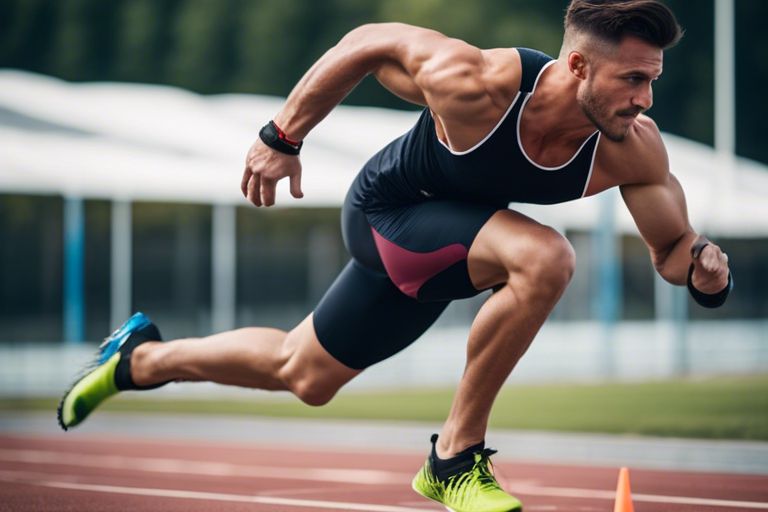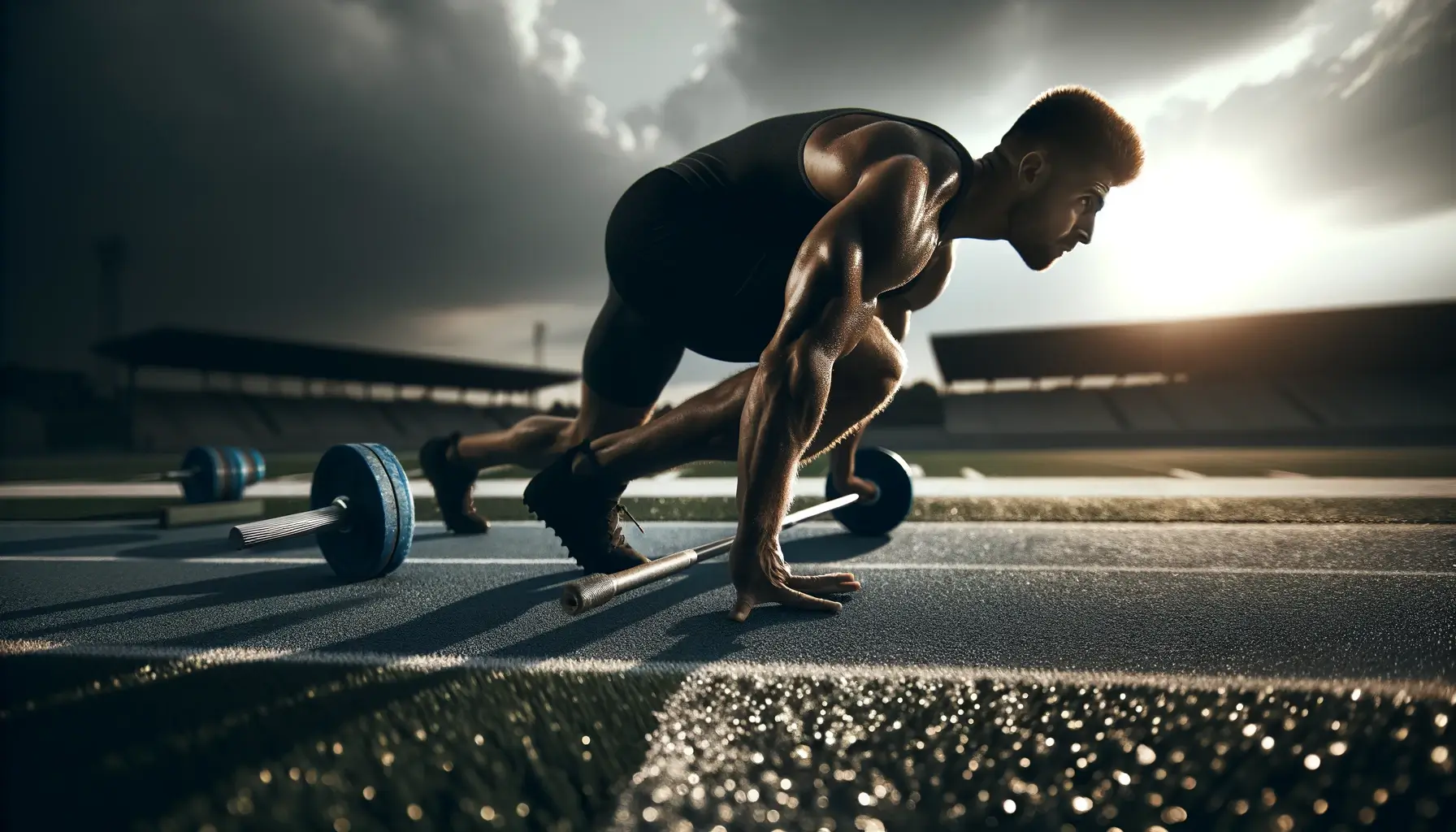Over the years, athletes have sought ways to push their bodies to the maximum potential in order to gain a competitive edge in their respective sports. Sports fitness training is a key component in achieving peak performance and excelling in highly competitive environments. By focusing on strength, endurance, agility, and mental toughness, athletes can elevate their game and outperform their competitors. This blog post will explore the necessary elements of sports fitness training that are necessary for athletes to reach their full potential and gain that crucial competitive edge.
Key Takeaways:
- Mental resilience is key: Building mental strength is as important as physical training for peak performance.
- Quality over quantity: Focus on efficient and effective training rather than just spending long hours in the gym.
- Proper nutrition is crucial: Fuel your body with the right nutrients to optimize performance and recovery.
- Rest and recovery are vital: Allow your body time to rest and repair to prevent burnout and injuries.
- Consistent training is key: Regular and consistent training helps build endurance, strength, and muscle memory for competitive edge.
Theoretical Frameworks of Peak Performance
If you aspire to achieve peak performance in sports, understanding the theoretical frameworks that underpin physical conditioning and human movement is crucial. By delving into the evolutionary perspectives on physical conditioning and the physics of human movement, we can uncover the secrets to unlocking a competitive edge in sports fitness training.
Evolutionary Perspectives on Physical Conditioning
Frameworks rooted in evolutionary biology shed light on how our bodies have been shaped over millennia to excel in physical activities. The concept of survival of the fittest extends beyond natural selection to sports, where athletes strive to push their bodies to the limits for victory. Evolutionary perspectives emphasize the importance of adaptation, genetic variability, and the role of environmental factors in enhancing athletic performance.
Moreover, understanding how our ancestors engaged in physical activities for hunting, gathering, and survival provides insights into optimizing training regimens for modern athletes. By tapping into our evolutionary heritage, athletes can tailor their fitness routines to mimic the movements that our bodies are inherently designed to perform, thereby maximizing efficiency and performance.
The Physics of Human Movement and Efficiency
Human movement is governed by the laws of physics, where concepts such as force, momentum, and energy come into play. By analyzing biomechanics and the physics of motion, athletes can fine-tune their techniques to improve efficiency and minimize wasted energy. Understanding how to apply principles of physics to sports movements can lead to enhanced performance and reduced risk of injury.
Any deviation from optimal movement patterns can result in decreased efficiency and increased strain on the body, potentially leading to fatigue and injury. By honing in on the physics of human movement, athletes can refine their skills and achieve peak performance while mitigating the risk of physical setbacks.

Strategies for Optimizing Physical Training
Your journey towards peak performance in sports fitness training requires a meticulous approach. By incorporating specific strategies for optimizing physical training, athletes can gain a competitive edge and push their limits beyond what they thought possible.
Periodization and Adaptation Principles
For athletes striving for peak performance, understanding the principles of periodization and adaptation is crucial. Periodization involves breaking down the training program into distinct phases, each focusing on different aspects of fitness such as strength, endurance, and speed. This systematic approach prevents overtraining and allows for optimal recovery, leading to continuous improvements in performance. Adaptation principles emphasize the body’s ability to adapt to stress gradually over time. By progressively increasing the intensity and volume of training, athletes can stimulate physiological adaptations that enhance their overall athletic abilities.
High-Intensity Training Versus Endurance Protocols
An effective debate in sports fitness training revolves around the comparison between high-intensity training and endurance protocols. High-intensity training focuses on brief, intense bursts of activity that push the body to its limits. This type of training is known for its ability to improve anaerobic capacity, explosive power, and speed. On the other hand, endurance protocols center around sustained, moderate-intensity exercise that enhances cardiovascular endurance and stamina.
Training in high-intensity intervals has been shown to elicit significant improvements in VO2 max, a key marker of aerobic fitness, as well as overall athletic performance. On the contrary, endurance protocols are important for building a solid aerobic base and increasing the body’s ability to sustain prolonged physical activity. Athletes must strike a balance between these two training modalities to achieve a well-rounded level of fitness that translates into peak performance on the field.
The Mind-Body Connection
Unlike what was previously believed, the mind and body are not separate entities when it comes to sports fitness training. The connection between the two is crucial in achieving peak performance and gaining a competitive edge in sports. This chapter explores how cognitive strategies and psychological impact play significant roles in enhancing athletic performance.
Cognitive Strategies for Enhancing Performance
The mind is a powerful tool in sports fitness training. The ability to visualize success, focus on goals, and stay mentally tough during intense training sessions can make all the difference in performance. Athletes who use cognitive techniques such as positive self-talk, mental imagery, and goal-setting are more likely to excel in their sport. The mind-body connection is evident in how these strategies can directly impact physical endurance, strength, and overall performance.
The Psychological Impact of Rigorous Training
An athlete’s mental state is greatly influenced by the rigorous training they undergo. An intense training regimen can lead to both positive and negative psychological effects. Some athletes may experience increased confidence, mental resilience, and a greater sense of accomplishment. However, others may face burnout, anxiety, and self-doubt due to the pressures of training and competition.
To truly harness the power of the mind-body connection in sports fitness training, athletes must be aware of the psychological impact of their rigorous training. Understanding how training can affect mental well-being and performance is vital in developing strategies to overcome challenges and optimize results. By addressing both the physical and mental aspects of training, athletes can achieve peak performance and gain a competitive edge in their sport.

Technological Advances in Sports Fitness
Not only are athletes constantly pushing their physical limits, but they are also leveraging the latest technological advancements to gain a competitive edge in sports fitness training. From biomechanics to advanced analytics, to next-generation wearables and performance monitoring, technology is revolutionizing the sports fitness industry.
Biomechanics and Advanced Analytics in Training
The fusion of biomechanics and advanced analytics is revolutionizing sports training by offering personalized insights into athletes’ performance. This technology enables precise adjustments to training routines, fostering optimal outcomes. Here’s a concise overview:
- Real-time Data Analysis: Instant performance analysis allows for the customization of training to suit each athlete’s unique biomechanical profile, making preparation more efficient and targeted.
- Injury Prevention: By identifying potential injury risks through biomechanical analysis, trainers can devise specific strategies to prevent them, keeping athletes safer during their training regimes.
- Virtual Reality Training: VR technology offers athletes the chance to improve techniques and strategies in a simulated environment. This not only helps in perfecting complex movements but also in strategizing without the physical risks.
Next-Generation Wearables and Performance Monitoring
Technological advances in wearables have revolutionized how athletes monitor their performance in real-time. These next-generation devices provide athletes with valuable insights that enable them to optimize their training and maximize their competitive edge.
Wearables such as smartwatches, fitness bands, and GPS trackers allow athletes to track their heart rate, distance covered, pace, and more during training sessions and competitions. The data collected by these wearables can be analyzed to identify patterns, improve performance, and prevent injuries, ultimately helping athletes achieve peak performance.

Nutrition and Recovery
After intense physical exertion, the body requires proper nutrition and adequate recovery to perform at peak levels consistently. Nutrition plays a crucial role in enhancing athletic performance and optimizing recovery after strenuous workouts. It is crucial for athletes to fuel their bodies with the right balance of macronutrients, micronutrients, and hydration to support their training and competition demands.
Dietary Foundations for Athletic Excellence
For athletes aiming for peak performance, a diet rich in complex carbohydrates, lean proteins, healthy fats, and a variety of fruits and vegetables is crucial. Carbohydrates are the primary source of energy for muscles during exercise, while proteins are crucial for muscle repair and growth. Healthy fats support overall health and provide sustained energy, while micronutrients like vitamins and minerals play a key role in various physiological processes that impact athletic performance.
Rest, Recovery, and Injury Prevention Strategies
For athletes seeking to maintain a competitive edge, adequate rest, proper recovery, and injury prevention strategies are paramount. Rest and recovery are crucial for allowing the body to repair and adapt to the physical stresses of training, ultimately leading to improved performance. Injury prevention strategies such as proper warm-up, cool down, stretching, and strength training can help reduce the risk of injuries that could hinder an athlete’s progress.
The implementation of a comprehensive recovery plan, including sufficient sleep, hydration, and active recovery techniques like massage or foam rolling, can significantly impact an athlete’s ability to perform at their best consistently. It is crucial for athletes to listen to their bodies, prioritize rest and recovery, and seek professional guidance when needed to maintain optimal physical condition and prevent injuries that could impede their progress.
Conclusion
With these considerations, it is clear that peak performance in sports requires a combination of physical training, mental fortitude, and strategic thinking. By incorporating sports fitness training into their routine, athletes can gain a competitive edge and improve their overall performance. By focusing on improving their strength, speed, agility, and endurance, athletes can optimize their physical capabilities and excel in their chosen sport. Additionally, by incorporating mental training techniques such as visualization and goal setting, athletes can develop the mental toughness needed to overcome challenges and push themselves to new heights. Ultimately, by committing to a comprehensive training regimen that includes both physical and mental components, athletes can enhance their competitive edge and achieve peak performance.
FAQ
Q: Can sports fitness training improve competitive edge?
A: Indeed, sports fitness training plays a crucial role in enhancing one’s competitive edge by improving physical strength, stamina, agility, and mental focus.
Q: How does peak performance training benefit athletes?
A: Peak performance training helps athletes reach their full potential by optimizing their physical and mental abilities, leading to better performance outcomes in competitions.
Q: What are some key components of sports fitness training?
A: Key components of sports fitness training include strength training, cardio workouts, flexibility exercises, agility drills, and mental conditioning techniques.
Q: How important is mental resilience in sports training?
A: Mental resilience is crucial in sports training as it helps athletes stay focused, motivated, and confident, especially during high-pressure situations in competitions.
Q: How can athletes maintain peak performance levels in the long term?
A: Athletes can maintain peak performance levels in the long term by following a well-rounded training program, staying consistent with their workouts, getting adequate rest and recovery, and staying mentally strong and focused.

